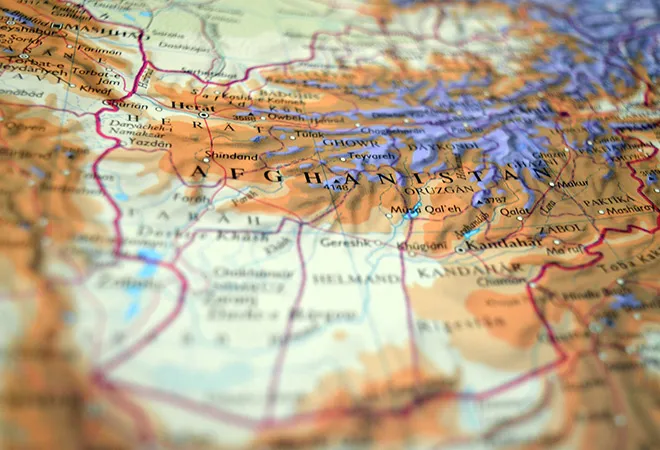India has never been able to make up its mind about Afghanistan, and now the stakes are higher, and more pressing, than ever. Should it engage, officially or unofficially, with Pakistan-backed groups such as the Afghan Taliban — or not? An unfolding breakthrough between the United States and the Taliban, which seems to promise a full US troop withdrawal in 18 months if the Taliban pledge an enduring cease-fire, makes this long-standing dilemma suddenly especially acute.
Officially, India maintains support for an Afghan-owned, Afghan-led reconciliation process. New Delhi wants the Kabul government to be the key player in the talks with the Taliban.
India’s Afghanistan policy is not driven by ideological or humanitarian concerns. It is driven by a desire to limit Islamabad’s influence in Afghanistan. This is because increased Pakistani influence in Afghanistan may not only lead to a reduced Indian presence but will also make India more susceptible to Pakistani-inspired terrorism and marginal in the wider region. As the most recent terrorist attack on Indian security forces in Kashmir, which claimed the lives of more than 40 personnel, underscored, India will be the first target of those who see in a US withdrawal a Taliban victory. The suicide bomber was reportedly inspired by the “Taliban victory” in Afghanistan.
India’s Afghanistan policy is not driven by ideological or humanitarian concerns. It is driven by a desire to limit Islamabad’s influence in Afghanistan.
India’s room for manoeuvre in Afghanistan is constrained by structural aspects, such as its limited material capacities, reputational concerns, and lack of geographical contiguity. Unlike the United States, for instance, India does not have the financial resources to support state building in Afghanistan. In reputational terms, it values its role as a constructive regional player that has helped build the capacity of the Afghan state in economic, political and military terms.
New Delhi requires partners both outside and inside Afghanistan to protect its presence and interests in the war-torn country. That led to an alliance with the Afghan communists in the 1980s, alongside the Soviet Union, and a similarly futile effort in the 1990s, when it threw its weight behind the so-called Northern Alliance with support from Iran and Russia.
India’s latest choice of partner has been the Kabul government alongside the United States. Since 2001, under the security umbrella of US-led NATO forces, India has built a sizable developmental and considerable intelligence footprint in Afghanistan, spending more than $2 billion in aid and infrastructural development, and reopened consulates across the war-torn country.
From a security perspective, the training of Afghan police, army, and intelligence officers, as well as its consular presence, offered India insight into the ground realities of the Afghan war. But in response to such inroads, outfits such as the Lashkar-e-Taiba and the Haqqani network, supported by Pakistan’s Inter-Services Intelligence (ISI) agency, began targeting Indian personnel and installations. What began as a series of kidnappings in 2005 of Indian workers building the Zaranj-Delaram highway in the Afghan province of Nimruz transformed into targeted attacks against the Indian Embassy and consulates after 2008.
Today, with Iran, Russia, China, and the United States directly engaging with the Taliban, and the credibility of the Kabul government at an all-time low, India is heading toward yet another crisis in Afghanistan. In the 1980s, after the Soviet withdrawal, India supported the beleaguered regime of Mohammad Najibullah until the end. The then-external intelligence chief, A.K. Verma, had reassured Prime Minister Rajiv Gandhi in 1988 that Najibullah would last a “long time” with Soviet support.
From a security perspective, the training of Afghan police, army, and intelligence officers, as well as its consular presence, offered India insight into the ground realities of the Afghan war. But in response to such inroads, outfits such as the Lashkar-e-Taiba and the Haqqani network, supported by Pakistan’s Inter-Services Intelligence (ISI) agency, began targeting Indian personnel and installations.
It took India’s embarrassing failure to save Najibullah from being ousted in April 1992, and the mujahideen takeover of Kabul soon after, for New Delhi to officially recognise the new rulers. In the same way, as the mujahideen factions went to war with each other and the Taliban rose from Kandahar to take over most parts of the country with Pakistani support, India chose to back the officially recognised government from 1992 on, refusing to shift tack in light of the Taliban’s visible military successes.
The hijacking of Indian Airlines Flight 814 in 1999 by Pakistan-based militants raised questions about the acuity of India’s decision to avoid even an informal channel with the Afghan Taliban or have some credible presence in Afghanistan’s Pashtun heartlands. The plane was taken to Kandahar, which was then under the Taliban’s control. After seven days of tortuous negotiations, India released three top militants — including Masood Azhar, the leader of the Pakistan-based terrorist group Jaish-e-Mohammad — to secure the release of all passengers. Still, with support from Iran and Russia, and with the United States becoming increasingly preoccupied — and paranoid about — with Islamist militancy, New Delhi felt no urgency to accommodate the Taliban.
But now, when much energy, lives, and capital have been exhausted, and the United States is unwilling to fight a forever war, India is feeling the need to reconsider its options. India today is much more confident about its ability to shape regional developments, given its strategic partnership with the United States and significant investments in Afghanistan over the last two decades.
Avinash Paliwal is Lecturer in Diplomacy and Public Policy at SOAS, University of London.
This commentary originally appeared in Foreign Policy.
The views expressed above belong to the author(s). ORF research and analyses now available on Telegram! Click here to access our curated content — blogs, longforms and interviews.




 PREV
PREV


